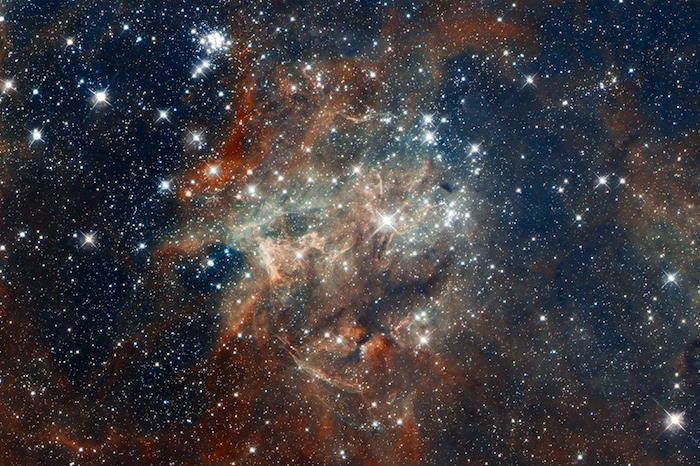Simbiosi e telepatia come basi biologiche dell'utopia in Last and First Men di Olaf Stapledon
Abstract
L'utopia è una delle forme privilegiate di immaginazione dell'impossibile e uno dei temi centrali della produzione letteraria e filosofica di Olaf Stapledon. In Last and First Men egli non si limita a elaborare modelli politico-sociali alternativi ma immagina un cambiamento radicale della natura umana, a partire dalle sue basi biologiche. Lo scopo del presente lavoro è analizzare l'uso metaforico della biologia nella costruzione dell'ideale utopico della comunità autentica emergente dalla successione di diverse specie umane.
Attraverso la tecnica del close reading guidata dal modello ermeneutico dell'utopia di Jameson, si mostrerà come concetti biologici e metafore organiche investano trasversalmente i livelli allegorici del corpo, del tempo e della collettività. L'attenzione sarà concentrata sul tema della telepatia. In quanto dispositivo simbolico di massima apertura all'altro, essa costituisce la pietra angolare della comunità autentica. Si mostrerà come tale facoltà si colleghi metaforicamente ai concetti di simbiosi e di simbiogenesi, esplicitamente rappresentati nel testo come meccanismi di speciazione. Il processo evolutivo immaginato da Stapledon, connettendo biologia ed etica, si configura dunque come una contestazione del primato dell'egoismo e della competizione per la sopravvivenza, postulato dal darwinismo sociale, a vantaggio degli ideali comunitari di solidarietà e cooperazione.Downloads
Riferimenti bibliografici
Allendy, René, Le symbolisme des nombres: essay d’arithmosophie, Paris, Editions Traditionnelles, 1948.
Bailey, Kenneth V., “A Prized Harmony: Myth, Symbol and Dialectic in the Novels of Olaf Stapledon”, Foundation, 15 (1976): 53-66.
Id., “Time Scales and Culture Cycles in Olaf Stapledon”, Foundation, 46 (1989): 27-39.
Chevalier, Jean – Gheerbrant, Alain (eds.), Dictionnaire des symboles, Paris, Robert Laffont, 1982.
Bollinger, Laurel, “Symbiogenesis, Selfhood, and Science Fiction”, Science Fiction Studies, 37.1 (2010): 34-53.
Crossley, Robert, Olaf Stapledon: Speaking for the Future, New York, Syracuse University Press, 1994.
Geoghegan,Vincent, “Olaf Stapledon: Utopia and Worship”, Utopian Studies, 16.3 (2005): 347-364.
Glicksohn, Susan, “A City of which the Stars are Suburbs”, SF: the Other Side of Realism, Ed. Clareson, Thomas, Ohio, Bowling Green University, 1971: 334-347.
Huntington, John, “Olaf Stapledon and the Novel about the Future”,Contemporary Literature, 22.3 (1981): 349-365.
Jameson 1990 = Jameson, Fredric, L’inconscio politico. Il testo narrativo come atto socialmente simbolico, trad. it., Milano, Garzanti, 1990.
Id.,Il desiderio chiamato utopia, trad. it., Milano, Feltrinelli, 2007.
Luckhurst, Roger, The Invention of Telepathy: 1870-1901, New York, Oxford University Press, 2007.
McCarthy, Patrick A., “Star Maker: Olaf Stapledon’s Divine Tragedy”,Science Fiction Studies, 8.3 (1981): 266-279.
Id. 1989 = Id., “Stapledon and Literary Modernism”, The Legacy of Olaf Stapledon. Critical Essays and an Unpublished Manuscript, Eds. McCarthy, Patrick - Elkins, Charles - Greenberg, Martin, New York Greenwood Press, 1989: 39-51.
Pagetti, Carlo, Il senso del futuro: la fantascienza nella letteratura americana.Roma: Edizioni di Storia e Letteratura, 1970.
Pievani, Telmo, Introduzione alla filosofia della biologia, Roma, Laterza, 2005.
Rabkin, Eric S., “The Composite Fiction of Olaf Stalpledon”, Science Fiction Studies, 11.3 (1982): 238-248.
Shelton, Robert, “The Mars-Begotten Men of Olaf Stapledon and H. G. Wells”,Science Fiction Studies,11.1(1984): 1-14.
Stapledon, Olaf, Last and Firs Men, London, Gollancz, 2004.
Id.,Saints and Revolutionaries(1939), eBook@Adelaide, 2009.
Suvin, Darko, Le metamorfosi della fantascienza. Poetica e storia di un genere letterario, trad. it., Bologna, Il Mulino, 1985.
Tremaine, Louis, “Historical Consciousness in Stapledon and Malraux”,Science Fiction Studies, 11.2 (1984): 130-138.
Williams, Raymond, “Utopia and Science Fiction”, Science Fiction Studies, 5.3 (1978): 203-214.
Informazioni sul copyright
Questa licenza permette a terzi di riprodurre, distribuire, comunicare al pubblico, esporre in pubblico, rappresentare, eseguire, recitare e modificare quest'opera, purché vengano citati l'autore e la rivista. Questa è la più ampia tra le licenze Creative Commons, rispetto alle libertà concesse a terzi sulle opere licenziate sotto Attribuzione.









